The reason for the "X" at the end of the ID card was in this ancient painting of the Ming Dynasty?Intersection
Author:Institute of Physics of the Ch Time:2022.09.29
This is a small math operation,
But it contains huge power,
It is the security of the entire system.
Guo Garden · Associate Researcher at the Institute of Natural Sciences, Chinese Academy of Sciences
Gezhi Campus No. 26 | July 9, 2022 Beijing
Hello everyone! I am Guo Garden from the Institute of Natural Sciences of the Chinese Academy of Sciences. Today I am very happy to be able to talk to you on the stage of Gezhi Tao. Some students prefer mathematics, but there may be classmates who don't like mathematics so much. I want to look at mathematics from another angle through this speech.
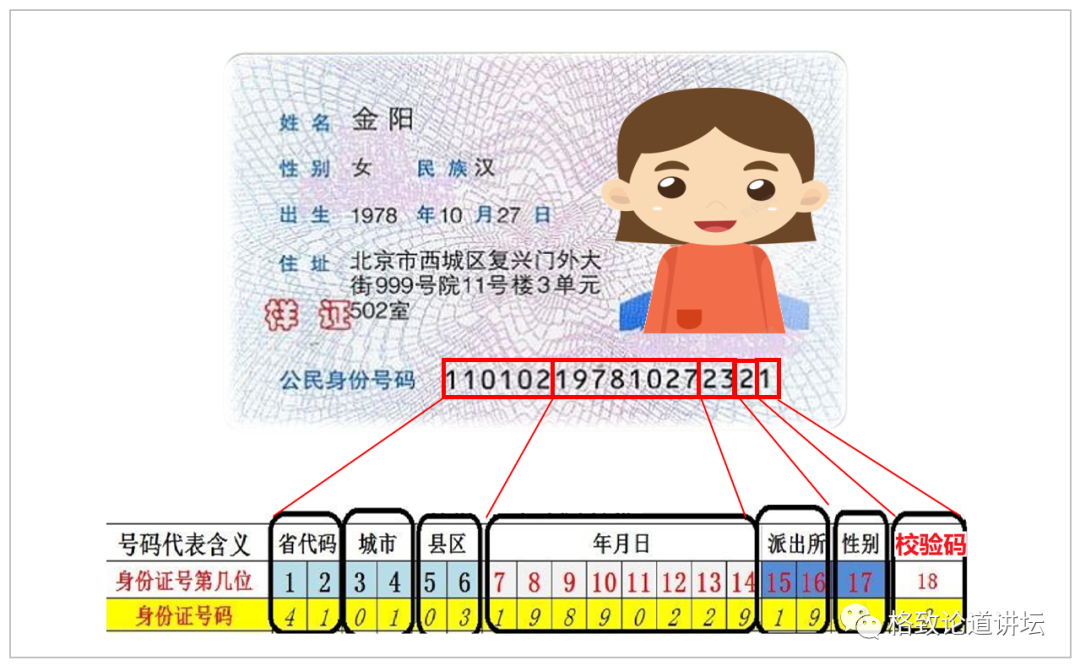
The meaning represented by ID number
Today's theme is "Mathematics in ID Card". At present, the number of residents' identity cards in my country is a total of 18 people, and the first 17 digits have specific meanings. The first 6 digits are the code of the province and city when I apply for an identity card. In the middle is the year, month, and day of birth, and the order code for the police station when applying for a household registration.
The last number of numbers is calculated after simple mathematical operations in the previous number. What is it called? The answer is the verification code. Today, let's take a look at how it is calculated and why this operation is performed.
Two days ago, my daughter got her first ID card, and she was very excited to get our adult's ID card. At this time, she found: "Why is the last one on my ID card X, and the last one of your ID cards is numbers?"
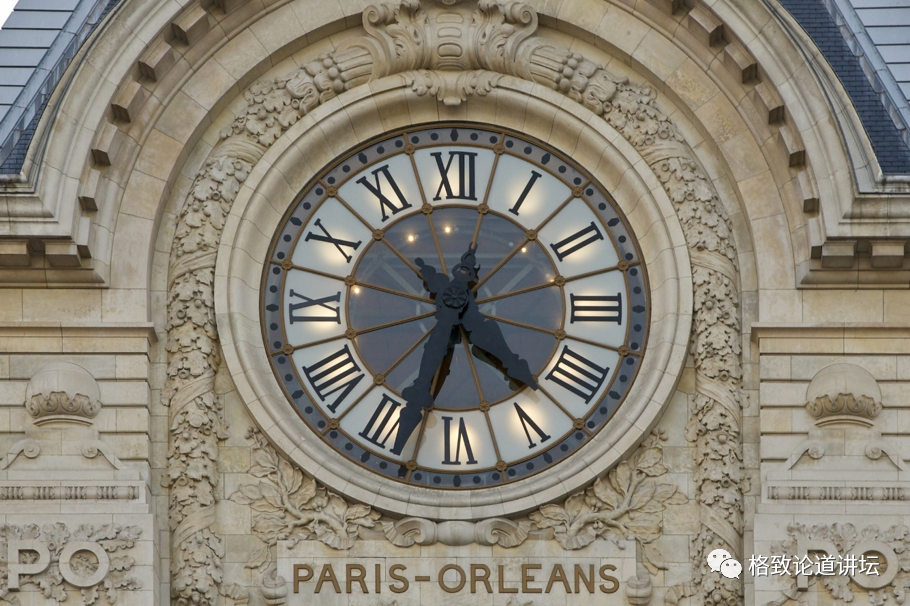
The clock engraved with Roman numbers
In fact, this is not a letter X, but 10 in Roman numbers. Why not write 10? Because if it is 10, the ID number is written into 19 digits. In coding, different digits are not easy to store or use.
So why did the last check code calculate 10? In fact, this algorithm has a history of thousands of years. And I happen to be engaged in this study, which can explain this problem to my child.
Mathematics from the Silk Road
Completed: 10%///////////
First, let's look at an ancient algorithm: abandon the nine methods. This needs to mention an ancient mathematical book, and the location of this math book is in this ancient painting.

"Map of Silk Road"
This painting is called "Map of the Silk Road", which is currently collected in the Palace Museum. It is a long -axis painting during the Jiajing period of the Ming Dynasty, depicting the vast Asian and European plains from Jiayuguan from western my country to the Macga Plain. The city is marked in Chinese characters, and in the middle of the long -axis painting, there is a city called Samalhan.

Samalhan City and Wangxing Tower
Where is Samalham? It is Samalham, the second largest city in Uzbekistan in western Xinjiang, my country. Next to the city of Samalhan, there is also a small corner building, which is marked with three words "Wang Xinglou". It was actually the suburbs of Samalham at the time called the Wuruberg Observatory.
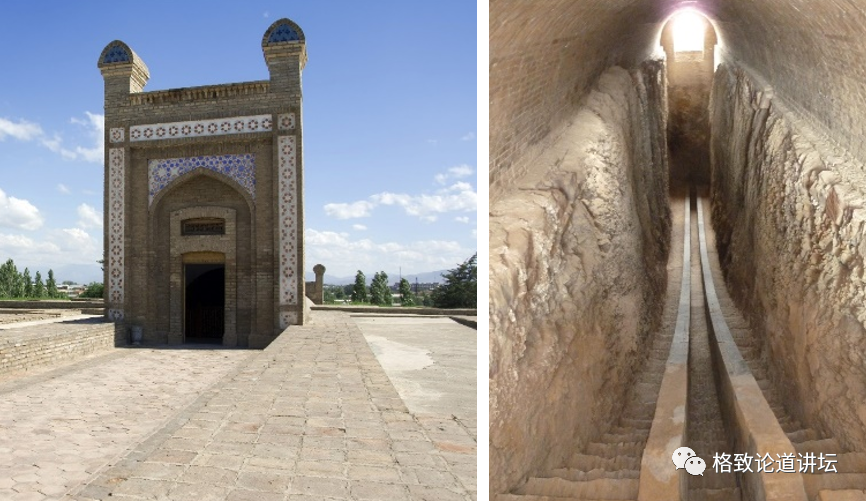
Wuluberger Observatory Ruins
Why not only draw its city, but also draw the Observatory? This shows that in history, my country and various countries along the Silk Road have not only carried out close economic and trade exchanges, but also have close scientific exchanges. Special mathematics and astronomical exchanges are very frequent. The picture on the left is the site of the Wuluberg Observatory. At that time, after years, the surface of the observatory had been destroyed. Later, after the excavation of archeologists, there was still a very complete six -point instrument in the ground.

The two people in the painting of Wuluberg (1394-1449) and Al-Cassie (1380-1429) (right) were the protagonists of today's story. At the beginning of the 15th century, the left side was the emperor, called Wurberg, which was the ruler of the city of Samalham at the time. Wuluberg not only loves rivers and mountains, but also loves science. If all emperors in ancient and modern Chinese and foreign countries rank in accordance with their scientific literacy, Wuluberg should be among the best. He compiled "Wuluberg", and its accuracy was very high in the world at that time. A person who likes science so much, of course, also likes talents from all kinds of mathematics and astronomy from the empire.
On the right is Alcari, the chief scientist of Wuluberg, and the first director of the Wuruberg Observatory. At that time, the chief scientist must not only help the emperor solve the most difficult mathematics and astronomy issues, but also compile mathematical books in the artisans, officials and children in the empire. The name of this book is "The Key of Arithmetic". The name sounds strange. In fact, it was the most commonly used name in Arabic books at that time, which is the key to arithmetic. In this book, it includes content similar to today's elementary and junior high school: arithmetic, algebra, and geometry.
"Key of Arithmetic" Chapter 1 Catalog
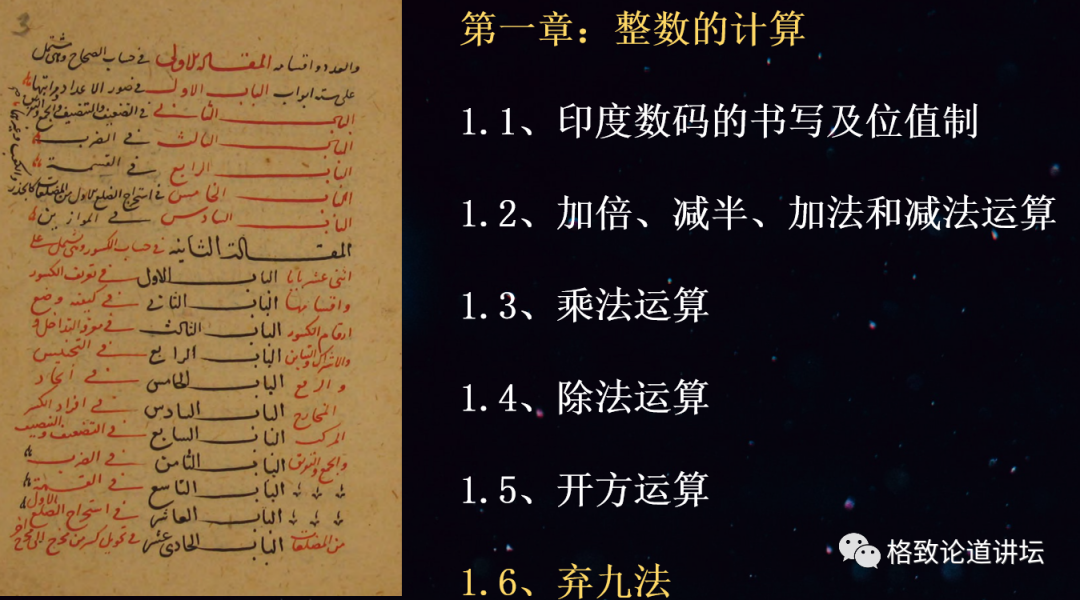
This arithmetic content also includes integers and scores. The first volume is the operation of integer, such as addition, subtraction, multiplication, and division. Another algorithm is very interesting, called abandoning nine methods.
This picture is a manuscript of Arabic. At that time, Arabic was the official language of Samarham, which was written from right to left. But the Arabic figure we use now is written from left to right. This is very interesting, because Arabic numerals are actually passed from India, which is also a kind of civilization impact and integration.
"Key of Arithmetic" abandon nine methods
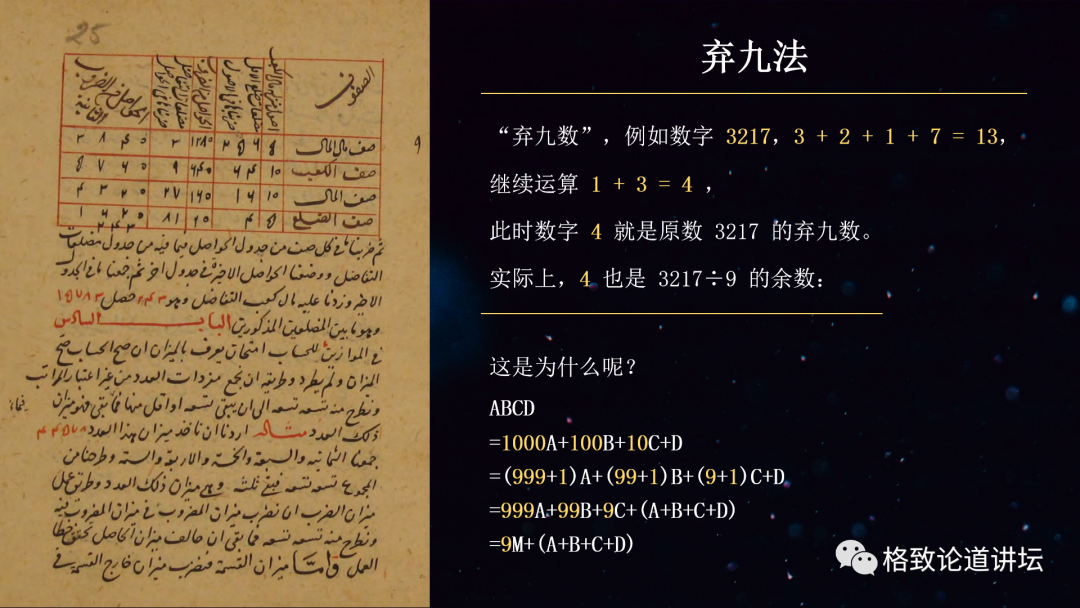
If you want to understand the abandonment of the nine laws, you must first know what it means to abandon nine. For example, there is a number 3217. If each of the numbers on each digit are added continuously, 3 plus 2 plus 1 plus 7 is equal to 13. Continue to add the numbers on each of 13, 1 plus 3 equals 4. Until the number 4 is obtained, this 4 is called the abandoned nine numbers of 3217. In fact, this abandoned nine numbers are the remaining number after 3217, but this continuous addition is a fast algorithm. It has been known for a long time ago.
What is the use of abandoning nine numbers? The key is to test whether the operation is accurate. At this time, there are abandonment of the nine methods. Everyone thinks about it, usually when calculating addition, subtraction and multiplication, is it often easy to calculate? The ancients were very smart and invented the abandonment of the nine laws.
For example, now to check a multiplication operation: 3169 multiplied by 732 or whether 2319708 is accurate. If there is no other way, you can only calculate it again. But how does the nine law be tested? First of all, the abandonment of 3169 was found, it was 1. It is to add each one continuously, and finally get a digit number 1.732. Its abandoned nine is 3.2319708 abandoned nine is 3. Then let's take a look, whether 3 is 3 or not, the result is accurate.
This shows that there is a high probability that the very large number of numbers in front is correct. However, if it is wrong with the test of the ninth method, it means that the previous operation must be wrong. This is the method of verification of the ancients, full of wisdom.
The string table (left) in "Wuluberg" and Ali Cassi calculated the root number 3 (right)

Of course, creating mathematics is definitely not just for the exam. When Alcari taught children, it was not for everyone to take a variety of papers to test everyone. Most of the mathematical knowledge is for ordinary people to apply.
As the chief scientist, Ah Cassi, assisted by Wuluberg to formulate an astronomical calendar, needs to perform a lot of operations. For example, there is a very large sine watch on the left. Each number in the sine table needs to be accurately calculated. If you say as an astronomical accuracy, each number is at that time, it is meaningful to reach about 18 digits behind the decimal point. Too low accuracy has no practical significance.
In order to achieve high -precision operations, Alcari also needs to be tested. As a first -class mathematician, he has an advantage than ordinary people when considering high -dimensional issues. However, if it is purely plus, subtraction and multiplication, mathematicians are relatively different from ordinary people. In fact, their differences are not large.
The vertical watch on the right is Alcari calculating the root number 3. He wants to calculate the root number 3 to the 28 -bit behind the decimal point. There are hundreds of data in this table. In order to ensure the accuracy of the operation, Alcari used the abandonment of the nine laws and tested each step. Each data on the right was tested by abandoning the nine methods.
From abandoning nine to Tongyu
Completed: 50%///////////
With the Renaissance in Europe, these Arab algorithms have been passed to Europe. Since the Ming Dynasty, our country's mathematics and astronomy have begun to decline rapidly worldwide. The more advanced mathematical science knowledge in the West has also been introduced to our country, forming Western learning east. So in the years after Alcari, this algorithm was passed to the world.
High School Mathematics textbook
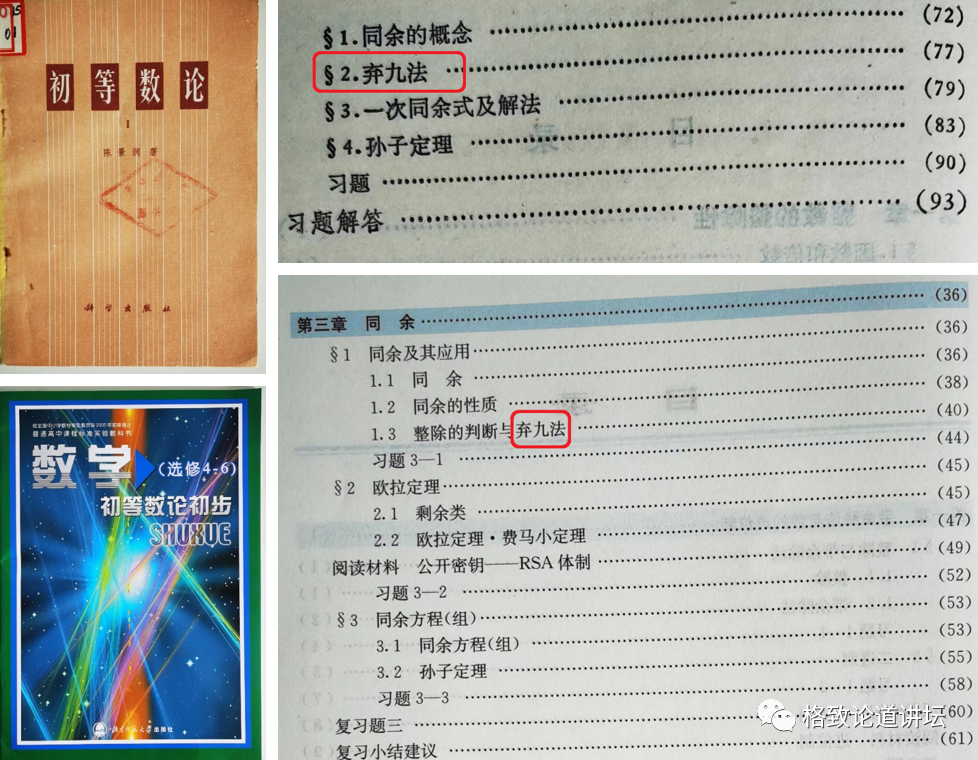
In the process of abandoning the development of the nine laws, mathematicians gradually realized that they abandoned the Seventh Law, the Eleventh Law, and the Thirteen Law. These methods are actually Tongyu theory in the first primary theory today. For example, this picture shows the most common high school mathematics textbook today. What are the more common services in our daily life? The answer is to calculate the school check code. The method of calculating the ID number of ID number
The verification code that is related to our lives is on the ID card. We often need to enter the ID number on mobile phones or computers. If there is no check code, it is to enter 17 digits, and it is easy to accidentally lose a mistake or two upside -down positions. Then with the 18th school check code, this situation can be found in time. It is precisely because of a small verification code that the security of the entire system can be guaranteed.

How is it calculated? Mainly three steps: First of all, the ID number is 17 digits, and the first 17 -digit number is multiplied by different coefficients in turn. For example, the first is multiplied by 7, the second is multiplied by 9, and the third is multiplied by 10, which is called a weighted factor in mathematics. The same two weighted factors are different, in order to distinguish the number. Then add these 17 multiplication to 11. At this time, the eleven law came out, and its algorithm thought had a history of thousands of years.
How many possibilities are there in a large number of large numbers? If you are eliminated, can the remainder be seen as 0? There may also be 1, 2, and 3, and 10 may appear, but 11 cannot appear. In this way, different remains will correspond to different verification codes. For example, when the remaining number is 0, the corresponding check code is 1; when the remaining number is 1, the corresponding verification code is 0; the remaining number is 2, and the check code corresponds to that X. This is why the last one of the ID card may be 0, 1, 2, 3, 4, 5, 6, 7, 8, 9, X.
Books printed with ISBN number
Let's look at a simpler algorithm, which still uses the computing code of the eleven method for verification code. As long as the books bought from a regular bookstore, each book will have an ISBN number called the international standard book number.
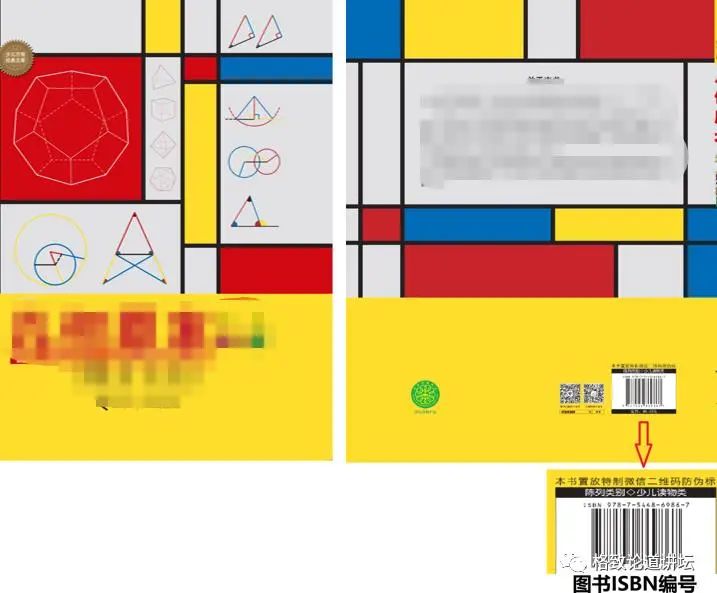
There are currently two types of ISBN numbers: one is 10 and the other is 13. How to calculate this 10 -bit? If it is a 10 -bit ISBN number containing a school code, the top 9 of it has specific meanings. For example, which country is this book, which publisher, and which type of book is this book.
How to calculate the 10th place? For example, the source number of the top nine in the first book is 730904547, how to count the last one? Multiply the first digits to 10, the second digit is multiplied by 9, the third digit is 8, then 7, 6, 5, 4, 3, 2, and finally get a number 226. Then calculate 226 plus who can be removed by 11, and found that 226 plus 5 can be except 11. According to this algorithm, the verification code should be 5, so the 10th check code is obtained.
So how does it play a verification? If the first number is lost, it was 7, and I accidentally lost it. This situation is easy to appear, because the keyboard is next to it, and it may be on the side when you lose. According to this multiplied weighted factors, the one above is no longer 226, it should be 236. Because the first number multiplied by 10, accidentally lost into 8, it changed from 226 to 236. At this time, 236 needs to be added with 6 to be removed by 11. Then according to this algorithm, the verification code result is 6, not 5.
Therefore, in the real operation, if there is a number accidentally lost, but in the end the check code is still the original number, at this time the system will immediately identify that this number is an invalid number and a wrong number. This is a small math operation, but it contains huge power and is the security of the entire system.
The thought of the verification is everywhere
Completed: 80%///////////
In daily life, the idea of this verification code is still very common.
Barcode meaning
For example, the number of commemorative banknotes is not written casually. If you write a number casually, add letters in front, and add numbers later, it is not necessarily legal and effective. There may be encryption or verification operations.

I usually see this barcode when I go to the store or supermarket. The last one of the barcode is also the verification code, but when recognition, scan the scanned gun to scan it, and identify that it is different numbers according to the thickness of the barcode. The customer bought a very expensive thing, but it was used as a very cheap thing when entering. If there is a check code, the system will report an error. Without the protection of the school code, it is likely to cause losses to the supermarket.
QR code meaning
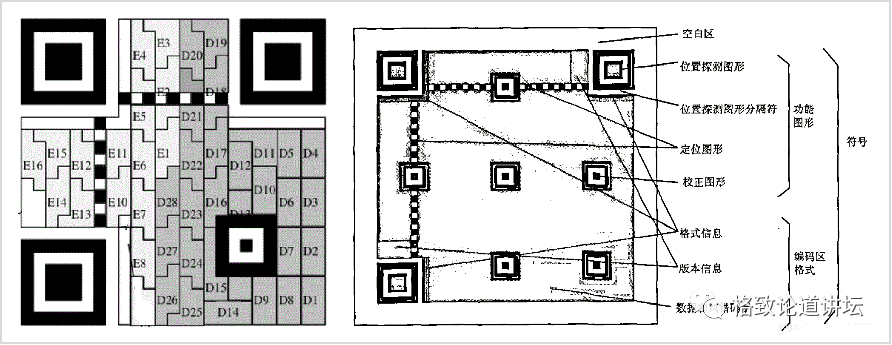
- END -
In -depth investigation of traffic accidents, Texas is at the forefront of the country

Behind road accidents on road traffic accidents, especially the road accident invo...
National Taiwan Affairs Office: Taiwan compatriots are trapped overseas and are dangerous.
Xinhua News Agency, Beijing, August 30th, a spokesman for the Taiwan Affairs Office of the National Taiwan Affairs Office, Ma Xiaoguang said on the 30th that the reporter said that Taiwan compatriots